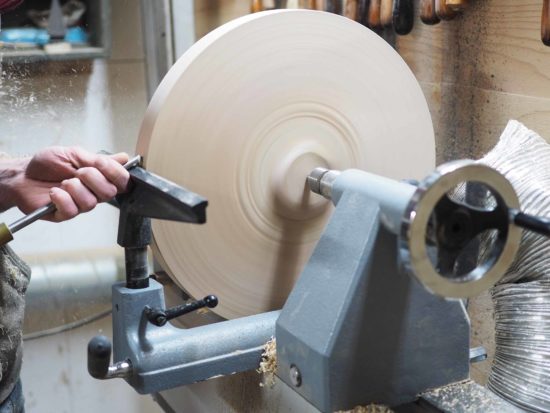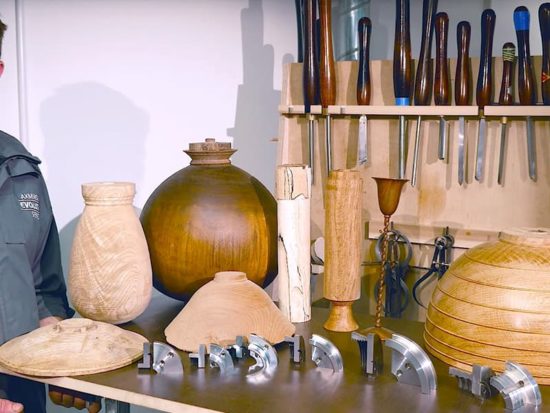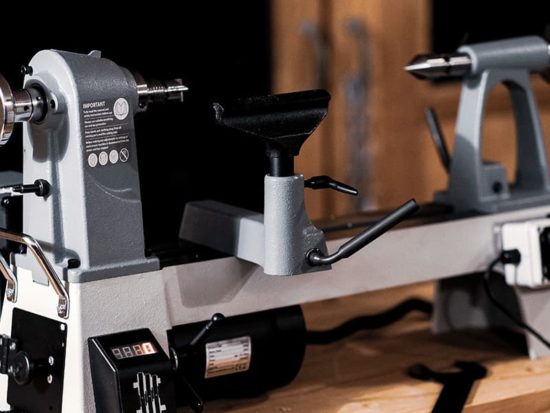Woodturning Lathe Accessories
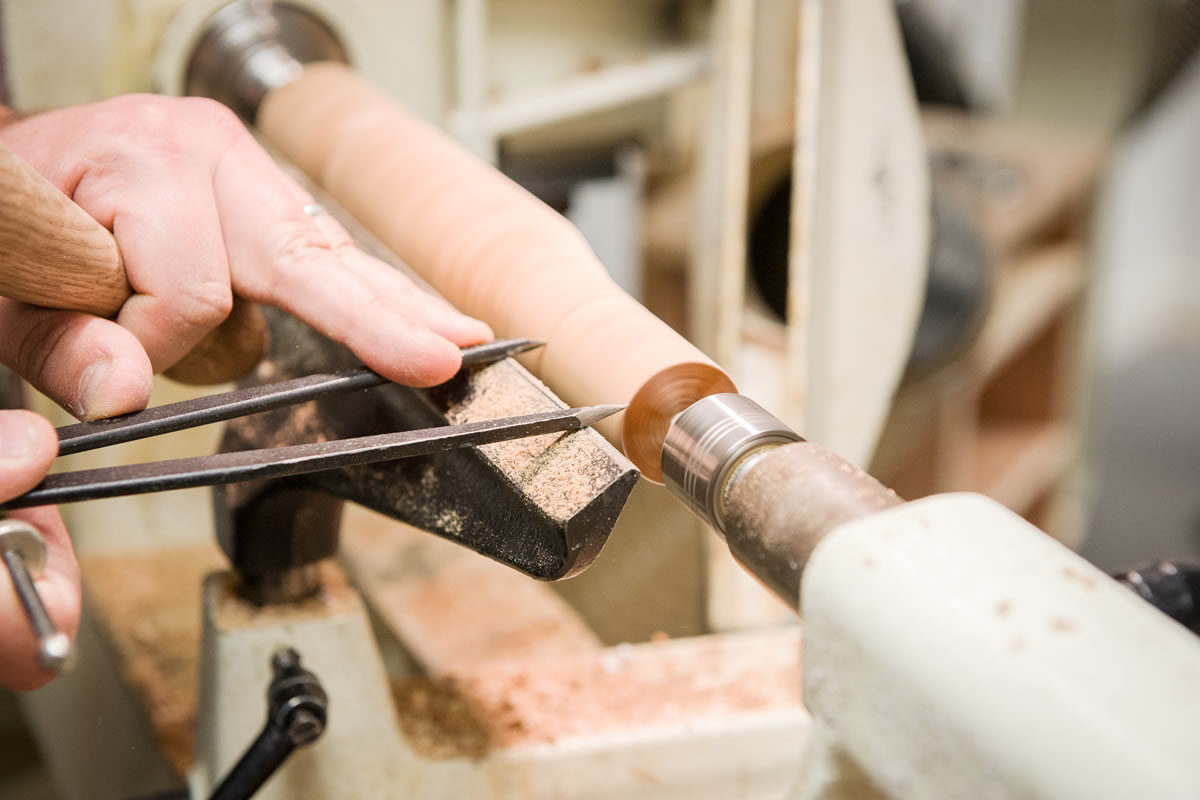
Introduction
When producing work between centres, there are a number of different ways to hold the wood, one of which is a chuck though if one isn’t appropriate, then there are alternatives which might be suitable.

Faceplates
As the name suggests, a faceplate is a flat circular disc of steel machined from one piece of metal through which a number of countersunk fixing holes have been drilled in order to mount the timber blank. Faceplates are usually always supplied with a lathe, but if an additional one is purchased, the central screw thread must match the spindle thread on the lathe. The alternative option is to use a faceplate ring which fits into either A, B, C or F type jaws, which are then in turn mounted on an Axminster chuck. One of the disadvantages of faceplate use is that the finished work (such as a bowl) may be left with unsightly screw holes in the base, in which case, other methods are preferred.
Drive and Tailstock Centres
All Axminster lathes are supplied with a ‘live’ tailstock centre, made ‘in house’ in Devon. They’re machined with 1, 2 or 3 Morse taper shanks, suitable for many different turning applications and lathes. All have revolving centres which means that the ‘live’ tailstock is fitted with bearings and thus turns with the workpiece. Older style, solid ‘dead’ centres are not recommended as they require frequent lubrication which can contaminate the workpiece.
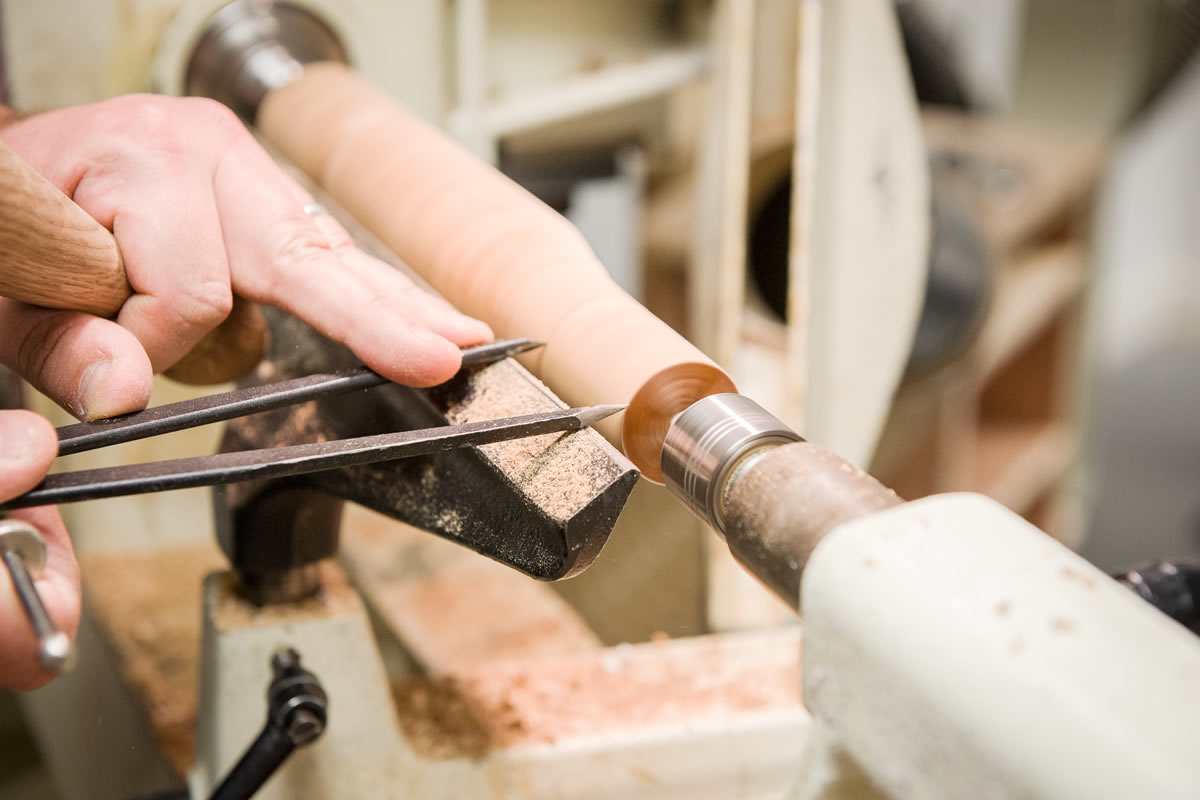
As with tailstock centres, our drive centres are made in Axminster, Devon. They’re a friction fit into the headstock, again using a 1, 2 or 3 Morse taper shank and are available in several different sizes to suit the the project being turned The drive engages the workpiece via two or four machined prongs though there are a couple of other types which may be considered. The first is the ‘Evolution’ multi-prong drive which offers a more secure and safer way of gripping the timber as in the event of a ‘dig in’, the job will stop rotating. The ‘cone’ drive works in a similar way but relies purely on friction to grip the workpiece.
Long Hole Boring
Another unique application of the woodturning lathe is the ability to bore a hole down the central axis which is required for the electrical cable when producing table or floor lamps. The hole is essentially produced by passing a special auger through the tailstock, its centre and then completely through the workpiece. There’s a comprehensive range of specialist tailstock equipment available for this task including the excellent ‘Evolution’ series.
Arbors
Arbors include several different types of Morse taper sleeves which enable the turner to fit alternative centres as circumstances require. However, a very useful piece of equipment is a 13mm keyed chuck, which can be mounted on an M1, 2 or 3 tapered arbor and then into the tailstock. These are essential for making holes using a variety of bits such as HSS jobber drills, saw tooth or ‘wave’ cut Forstner bits.
Conclusion
Turning between centres requires the workpiece to be correctly supported at each end. Depending on the project being produced, there’s a very wide selection of specific equipment from which the turner can select, designed to allow him or her to achieve the very best results, no matter how big or small the project.




